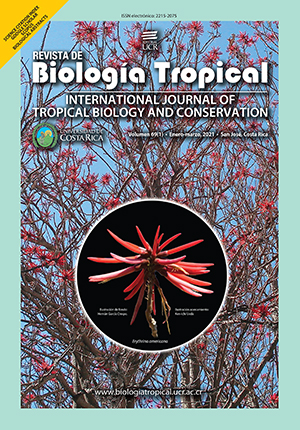Abstract
Introduction: Chironomids (Diptera: Chironomidae) are the most globally diverse and widely distributed aquatic insects. Despite their prevalence in lotic systems, little is known about the ecology and diversity of tropical species relative to other aquatic insect taxa, particularly at the immature stages. Objective: Characterize chironomid diversity across an elevational gradient in Southwestern Ecuador and water quality parameters associated with their composition. Methods: Samples were collected using a Surber net in forty rivers within four watersheds in the Ecuadorian Andes comprised of montane and dry lowland forest and spanning an elevational gradient of 3 120 m.a.s.l. Various physic chemical variables were measured including oxygen, conductivity, total dissolved solids, temperature, and pH. Results: Generally, environmental variables were strongly correlated with the composition of chironomid communities. Variation in the chriomid communities was most strongly associated with oxygen, conductivity and pH. The presence of Parametriocnemus, Cricotopus f4, Cricotopus sp3., Cricotopus (Isocladius), Oliveiriella, Onconeura, Alotanypus and Pentaneura was associated with lower temperatures, high dissolved oxygen and low conductivity while assemblages of Cricotopus sp., Rheotanytarsus, Tanytarsus, and Chironomus were associated with high conductivity and low concentrations of dissolved oxygen. The RELATE analysis showed that local environmental characteristics are determine the composition of the chironomid community. Conclusions: Similarity among local environmental factors was strongly correlated to similarity among Chironomidae assemblages, especially with variables such as oxygen concentration, pH and conductivity, whose variables are highly correlated to land use and dominant vegetation in the watersheds sampled.
##plugins.facebook.comentarios##

This work is licensed under a Creative Commons Attribution 4.0 International License.
Copyright (c) 2021 Christian Villamarín, Santiago Villamarín-Cortez, Danielle M. Salcido, Mauricio Herrera-Madrid, Blanca Ríos-Touma



